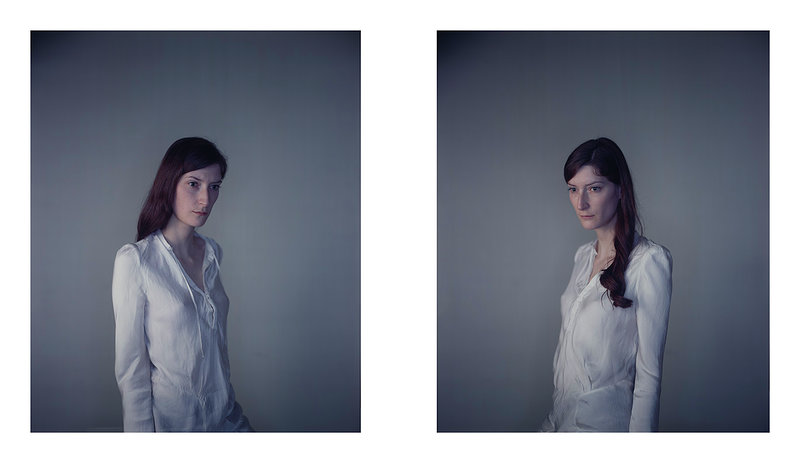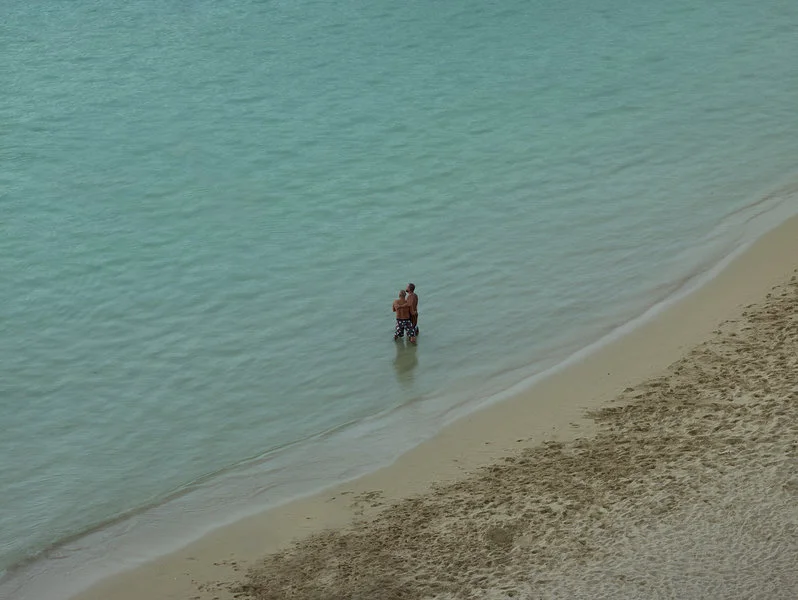Exhibition Review: Pairs
GARRY WINOGRAND Central Park Zoo, New York, 1967 gelatin silver print image, 8 3/4 x 13 inches © The Estate of Garry Winogrand
By: Ilana Jael
While the “photo series” is a staple of photography’s presentation, somewhat less common is the “photo duet.” But linking one picture to another is the central gimmick of exhibition Pairs at Pace McGill Gallery, which draws us in with a lively grey-green-painted wall and a cheeky set of homophones, in which Susan Paulsen’s Katonah, which features of a group of “pear” fruits is shown adjacent to Diane Arbus’s A family on their lawn one Sunday in Westchester NY, which focuses on a “pair” in a sunbathing couple. They aren’t the only “homo”s around either; closeby, Peter Hujar’s steamy Two Men in Leather Kissing meets its match in the man and beast print Theseus Slaying Minotaur by Yto Barrada. And Richard Misrach’s Untitled, a far-off aerial shot of two dark-skinned men with arms around each others’ shoulders, is paired with Emmet Gowin’s gold toned salt print Double Portrait, which shows us the outline of a more conventional coupling against a background of black.
SUSAN PAULSEN Katonah, 2012 pigment print image, 9 x 9 inches
© Susan Paulsen; courtesy Pace/MacGill Gallery, New York
Some of the exhibition’s other pairings bring together works that are more obviously synchronous. Paul Graham’s diptych Paris is made up of two prints differing only in their allotted brightness, and Richard Learoyd immortalizes the subtle differences between Jasmijn away from Light and Jasmijn to the Light. In two versions of Kristen as Juliet by Paolo Reversi, the chief alteration made between them is the removal of the subject’s dress, but we may find ourselves appraising this new, nude woman much differently than we did her clothed doppelganger only moments before. As we relate to each image and its counterpart, we may reflect on exactly which visual elements of a picture create its meaning, trying to figure out how they work their magic.
RICHARD LEAROYD, Jasmijn away from Light / Jasmijn to the Light, 2010, two camera obscura Ilfochrome photographs each mounted to aluminum
each image, 58 x 48 inches © 2018 Richard Learoyd
In other duos, less identical works still share substantial commonalities in subject matter and aesthetic. Anetta Bartos shows the same rural couple against similar backdrops licking ice cream cones and chasing chickens in Lody and Chicken; Gary Winogrand photographs two humans walking dogs in New York and two more holding monkeys in Central Park Zoo; JoAnn Verbury gives us an intimate facial close up of an old woman in Antoinetta and an old man in Blue Jim. Alone, these pictures each have plenty to offer; but in their dialogues, they give us fuel for a whole new conversations.
PETER HUJAR Two Men in Leather Kissing, c. 1966 vintage gelatin silver print image, 13 3/8 x 13 1/8 inches © The Peter Hujar Archive; courtesy Pace/MacGill Gallery, New York
And it’s perhaps the exhibition’s oddest couples that make its most lasting impressions. A mating of Kiki Smith’s Studio Nature III, which features two statuesque female faces, with Robert Frank’s Mabou, which consists of two views of a flag painted with the word “words”, suggests an intriguing similarity between the symbolic capacity of language and of the human visage. In combos by artists Irving Penn and William Christenberry, photographs of, respectively, a crowded table of objects and a red house are paired with a drawing and a painting of the same subject matter, prompting us to consider what a change in medium can add or subtract to an artist’s attempted portrayal of a moment’s essence.
RICHARD MISRACH Untitled (November 10, 2012 5:53PM), 2012 pigment print mounted to Dibond image, 59 x 78 3/4 inches © Richard Misrach; courtesy Pace and Pace/MacGill Gallery, New York
Finally, finishing out the collection are three photographic “pairs” that stand alone; arriving dateless to the gallery’s soiree are Irving Penn’s Two Men in White Masks, who serve as each others’ meaningful mirrors; Emmet Gowin’s Nancy and Dwayne, Danville, Virginia, which expertly captures the titular couple gleefully embracing on glistening grass; and a mysterious shot by an unknown photographer from the collection of Robert E. Jackson, in which a man prepares to slap his scantily clad female counterpart’s behind. Some pictures, it seems, need no counterpart or counterpoint, nor do they demand explanation; sometimes, one shot is enough to say it all.












